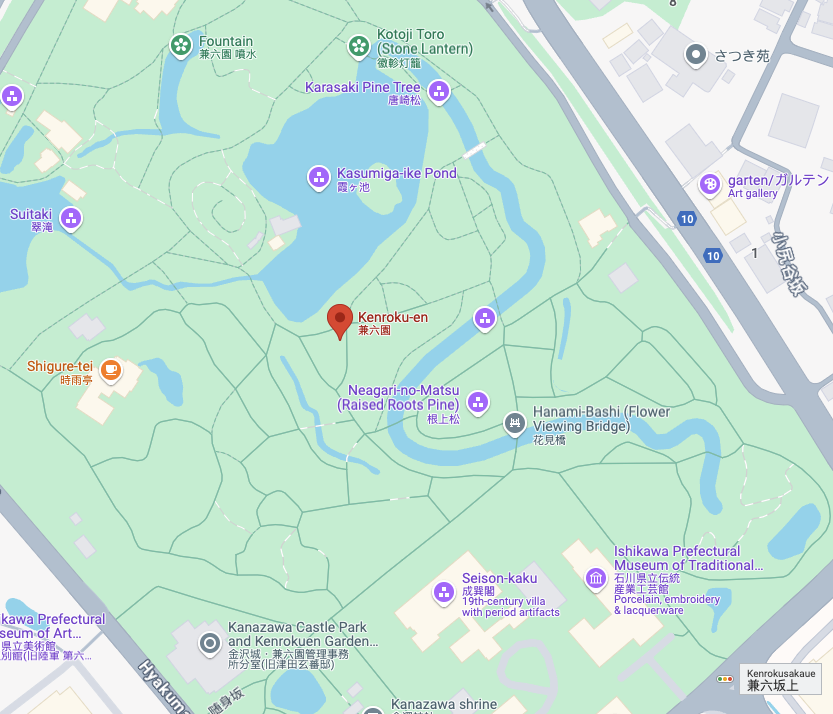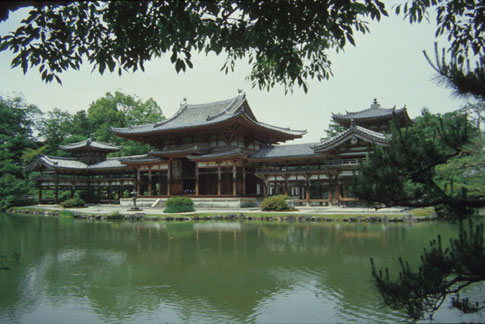
One of the largest of the Edo Period creations, the garden of Kenroku-en in the city of Kanazawa was created over the course of three centuries by and for the Maeda clan, the most powerful daimyo of the Tokugawa Shogunate. Although the great size of the garden makes it difficult to comprehend in its entirely, many of its individual components are much admired. Choose a view point from the map or click on Tour the Garden for more views of this garden. A more detailed history of the garden is reached by clicking on History.
Located in the important cultural center of Kanazawa, the garden of Kenroku-en was constructed by and for the powerful Maeda clan during the period between 1670 and 1870. The Maeda daimyo controlled the largest of the two hundred and sixty domains established by the Tokugawa Shogunate (it included the modern prefectures of Ishikawa and Toyama), so it seems appropriate that the garden should be one of the largest in Japan, covering 28 acres of land to the southeast of the location of the Maeda fortress (now the campus of Kanazawa University). It was opened to the public in 1871. Because of its complex and sprawling nature, and its proximity to museums and a children’s playground, it often impresses the visitor as more of a public park than a warlord’s garden, but many of its individual components are remarkably beautiful. The garden has four ponds, the second largest of which—Hisago Ike, the “Gourd Pond”—is probably the site of the earliest construction. Among its features is an unusually high waterfall and a rustic tea house, both constructed in 1774.
On a higher level and dominating the heart of the garden is the largest pond—Kasumiga Ike, or “Misty Pond.” Measuring well over 5,000 square meters, it is the center piece of a large number of elements, including tea houses, lanterns, bridges, and a large island said to represent either Mt. Horai or a turtle (both identifications are conjectural).
Most of the features of this large complex are included in the photographs offered on this website, together with additional references to names, locations, etc.

